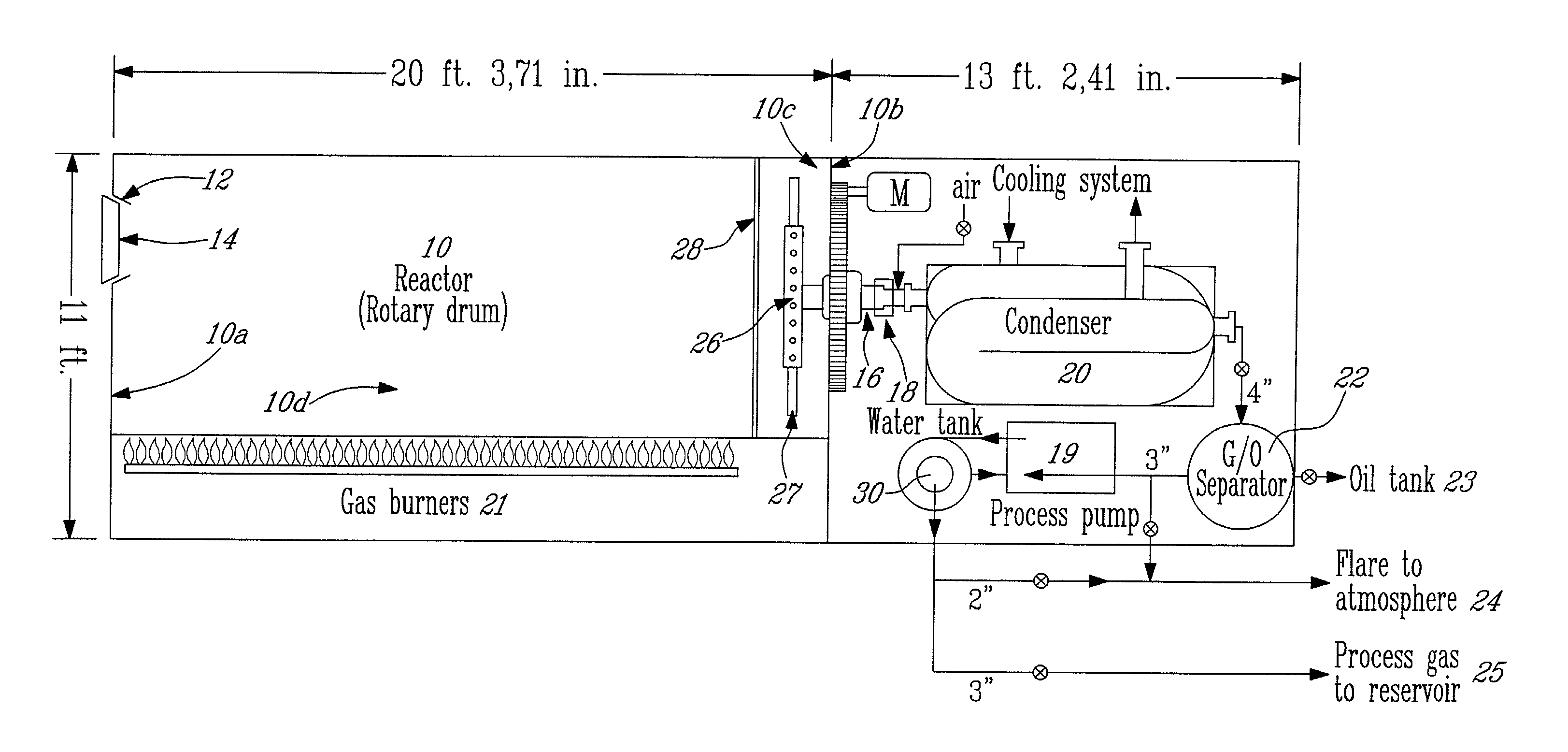Anoxic reaction apparatus and process for obtaining an anoxic reaction therein
a reaction apparatus and reaction technology, applied in the field of anoxic reaction apparatus and process, can solve the problems of violent explosion, inability to completely guarantee the seal, and inability to undertake thermal decomposition operations using a continuous process, so as to reduce the cost and potential harm to the environment, save time, and reduce the effect of vacuum pump
- Summary
- Abstract
- Description
- Claims
- Application Information
AI Technical Summary
Benefits of technology
Problems solved by technology
Method used
Image
Examples
example 1
[0075]The following result, illustrated in Table 2 is an example of the method disclosed herein, using the apparatus illustrated in FIG. 1. As a blank experiment, a volume of between 40 and 50 imperial gallons of freshly prepared oxyphilic solution was introduced in the drum (10). The drum was subsequently sealed. The temperature inside the drum (10) was raised and maintained at 100° C. Concentration of oxygen inside the drum was followed by a continuous analyzer using a chemical cell. Column 2 illustrates the volume of air (containing approximately 20.9% of O2 of the total air content (i.e., in percent by volume at 15° C. and 101.3 kPa) initially contained in the reactor that is gradually replaced by the volume occupied by the vaporized oxyphilic solution, as seen in column 3. As may be seen, from this example (Table 2), after 12.4 minutes, the volume of air containing O2 is negligible (0.147 cubic feet (ft3)). It may take less than 15 minutes to completely replace air with the vap...
example 2
[0077]The following is an example of an improved batch process based on the process described in U.S. Pat. No. 5,821,396, wherein an oxygen-free environment is generated using the method and oxyphilic solution described herein.
[0078]A drum (10) of 20 feet in length and 8 feet in diameter was used. Six tons (12 000 pounds) of used rubber tires which is equivalent to about 600 tires were first cut up in pieces of about 2″×2″ and loaded as tire cuttings into the stationary reactor drum with the reactor access door (14) at 12:00 o'clock. Forty-five (imperial) gallons of the oxyphilic solution containing water (56% (v / v) of total volume), alcohol (36% (v / v) of the total volume), small chain hydrocarbons (comprising a mixture of C6 and C7 hydrocarbons; 7% (v / v) of the total volume)) and polyethylene-(20)-sorbitan-monooleate (0.2 L, i.e., less than 1% (v / v) of the total volume) was added inside the reactor. The door was closed in an airtight manner. The drum was then driven at low speed of...
PUM
 Login to View More
Login to View More Abstract
Description
Claims
Application Information
 Login to View More
Login to View More - R&D
- Intellectual Property
- Life Sciences
- Materials
- Tech Scout
- Unparalleled Data Quality
- Higher Quality Content
- 60% Fewer Hallucinations
Browse by: Latest US Patents, China's latest patents, Technical Efficacy Thesaurus, Application Domain, Technology Topic, Popular Technical Reports.
© 2025 PatSnap. All rights reserved.Legal|Privacy policy|Modern Slavery Act Transparency Statement|Sitemap|About US| Contact US: help@patsnap.com


